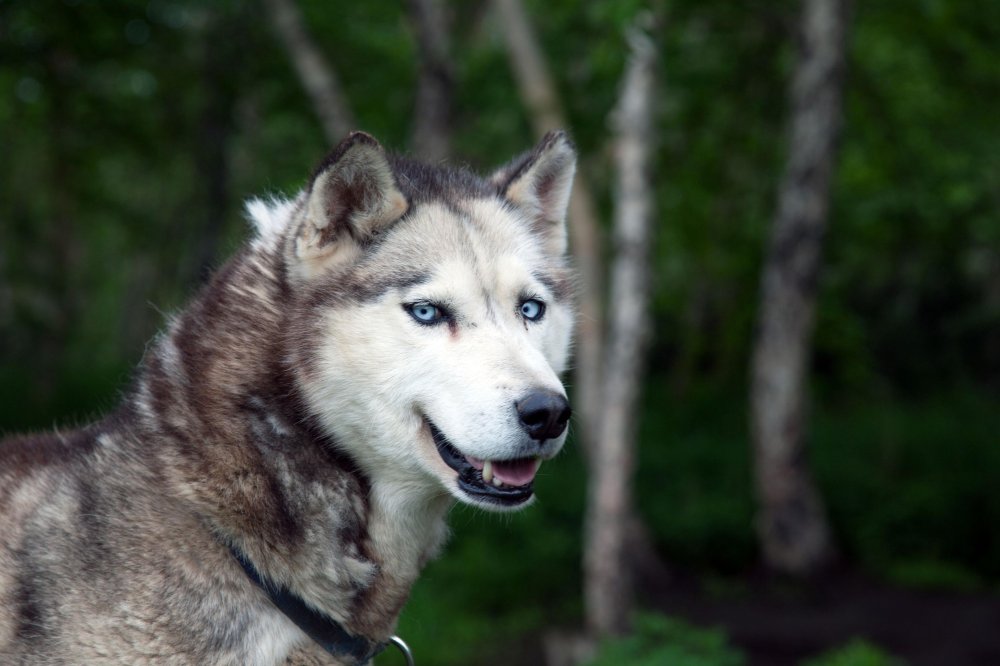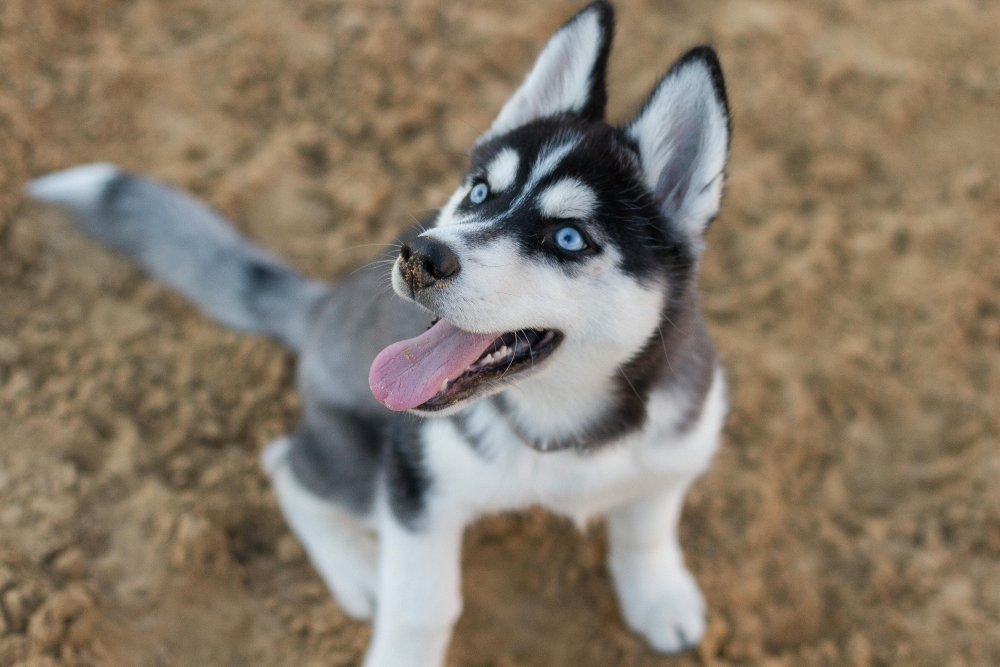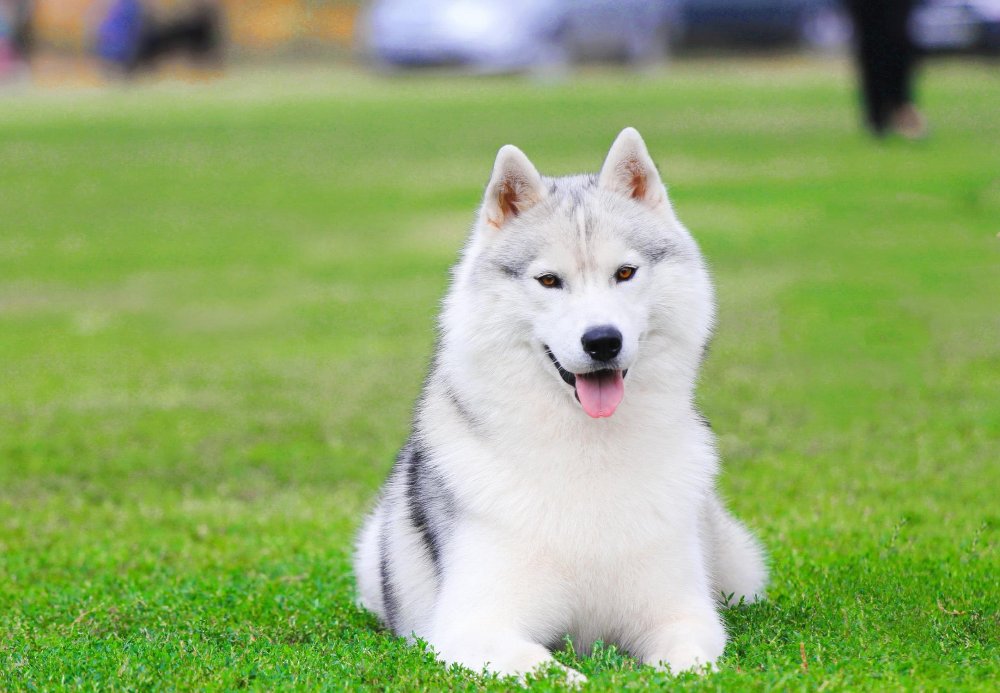- Breed Category: Working
- Country of Origin: Siberia, Russia
- Average Height: Male: 53-60 cm (21-23.5 in), Female: 50-56 cm (19.5-22 in)
- Average Weight: Male: 20-27 kg (45-60 lbs), Female: 16-23 kg (35-50 lbs)
- Average Life Span: 12-14 years
- Grooming Requirements: Moderate, regular brushing needed
- Exercise Requirements: High, needs daily exercise
- Coat Type: Double coat
- Coat Color Variations: Black, grey, red, agouti, sable
- Shedding Level: High, especially during shedding season
- Ear Type: Erect, triangular
- Tail Type: Bushy, sickle-shaped
- Temperament: Friendly, alert, gentle
- Intelligence Level: High, independent thinker
- Barking Tendency: Low, more likely to howl
- Compatibility with Children: Good, generally friendly
- Compatibility with Other Pets: Varies, may chase small animals
- Training Ease: Moderate, can be stubborn
- Common Health Issues: Hip dysplasia, eye disorders
- Dietary Needs: High-quality, balanced diet
- Energy Level: Very high, needs active lifestyle
- Drooling Tendency: Low
- Sensitivity to Weather: Tolerates cold well, heat sensitive
- Overall Maintenance Level: Moderate to high
- Original Purpose: Sled pulling, working dog
- Year of Recognition by Kennel Clubs: 1930
- Apartment Friendly: Not ideal, needs space
- Best Suited For: Active families, outdoor enthusiasts
- Cost of Ownership: Moderate to high
- Unique Traits: Striking eyes, wolf-like appearance
- Cultural Significance: Famous for endurance in harsh climates
- Popularity Rank: High, popular worldwide
The Siberian Husky is a captivating breed, known for its striking appearance and spirited nature. Originating from the cold expanses of Siberia, these dogs were bred by the Chukchi people for sled-pulling and companionship. Their endurance and resilience are legendary, making them a favourite among dog enthusiasts.
“The Siberian Husky is not just a dog; it’s a testament to the bond between humans and animals, forged in the harshest of climates.”
– Renowned Canine Historian
This article aims to delve into the unique characteristics, rich history, and essential care tips for the Siberian Husky. Understanding their origins helps appreciate their needs and behaviours, ensuring a happy and healthy life for these remarkable dogs.
Early Development and Cultural Significance

Early Development of the Breed
The Siberian Husky’s roots trace back to the Chukchi people of Siberia, who needed a robust and reliable sled dog. These dogs were bred for their endurance, able to travel long distances in harsh conditions. The Chukchi valued them not just for their strength but also for their ability to work as a team, which was crucial for survival in the icy wilderness.
Role in Siberian Culture and Sledding
In Siberian culture, Huskies were more than just working dogs; they were part of the family. They played a vital role in transportation, helping to move goods and people across vast, snowy landscapes. Their ability to pull sleds efficiently made them indispensable, and their friendly nature made them beloved companions.
Key Historical Figures
One notable figure in the breed’s development is Leonhard Seppala, a Norwegian musher who played a significant role in popularising the Siberian Husky in North America. His team of Huskies famously delivered life-saving serum during the 1925 diphtheria outbreak in Nome, Alaska, showcasing the breed’s incredible stamina and speed.
Physical Characteristics
Siberian Huskies are medium-sized dogs with a striking appearance. They have a thick double coat that protects them from extreme cold, and their almond-shaped eyes can be blue, brown, or even one of each. Their erect ears and bushy tail add to their wolf-like appearance, while their agile build makes them perfect for sledding and other activities.
Appearance and Unique Traits
Siberian Huskies are medium-sized dogs, typically weighing between 16 to 27 kilograms. Their thick double coat, which comes in a variety of colours including black, grey, red, and agouti, is designed to keep them warm in freezing temperatures. Distinctive facial markings and a bushy tail that often curls over their back add to their striking appearance. Their eyes are particularly captivating, often seen in shades of blue, brown, or even one of each, giving them a unique and mesmerising look.
Temperament and Behaviour
Known for their friendly and outgoing nature, Siberian Huskies are social animals that thrive on interaction. They are intelligent and independent, which can sometimes make training a challenge, but their eagerness to please often wins out. These dogs are energetic and require plenty of exercise to keep them happy and healthy. They are not typically aggressive, making them great family pets, but their strong prey drive means they should be supervised around smaller animals.
Personality Traits and Suitability

Typical Personality Traits
Siberian Huskies are known for their friendly and outgoing nature. They love being around people and are often described as social butterflies. Their independent streak can sometimes make them seem aloof, but it also means they are quite self-sufficient. Energetic and playful, they thrive in active environments where they can burn off their abundant energy.
Suitability as a Family Pet and Working Dog
These dogs make excellent family pets due to their gentle and affectionate nature. They are also highly adaptable, making them suitable for various roles, from family companions to working dogs. Their history as sled dogs means they have a strong work ethic and enjoy having a job to do, whether it’s pulling a sled or participating in agility sports.
Interaction with Children and Other Animals
Huskies generally get along well with children, thanks to their playful and gentle disposition. They are patient and tolerant, making them great playmates. However, their strong prey drive means they should be introduced carefully to smaller animals. Early socialisation is key to ensuring they interact well with other pets.
Training and Exercise Needs
Training a Siberian Husky can be a bit of a challenge due to their independent nature. Consistent, positive reinforcement methods work best. They require plenty of exercise to keep them mentally and physically stimulated. Daily walks, runs, or play sessions are essential to prevent boredom and destructive behaviour.
Training, Exercise, and Health

Importance of Early Training and Socialisation
Getting a head start on training and socialisation is crucial for Siberian Huskies. These dogs are naturally curious and independent, so introducing them to various environments, people, and other animals early on helps them grow into well-rounded adults. It’s all about setting the foundation for good behaviour and ensuring they’re comfortable in different situations.
Recommended Training Techniques
When it comes to training, patience and consistency are key. Positive reinforcement techniques, like treats and praise, work wonders with Huskies. They respond well to rewards and enjoy the mental stimulation that training provides. Keep sessions short and fun to maintain their interest and prevent boredom.
Daily Exercise Requirements and Activities They Enjoy
Siberian Huskies are high-energy dogs that need plenty of exercise. Daily walks, runs, or even a game of fetch can help burn off their energy. They love activities that challenge them physically and mentally, like agility courses or sledding. Keeping them active is essential to prevent restlessness and destructive behaviour.
Health and Lifespan
Generally healthy, Siberian Huskies have a lifespan of around 12 to 15 years. Regular vet check-ups, a balanced diet, and plenty of exercise contribute to their longevity. Like all breeds, they can be prone to certain health issues, so staying informed and proactive about their health is important.
Health and Care for Siberian Huskies
Common Health Issues
Siberian Huskies are generally healthy, but like any breed, they can face certain health issues. Hip dysplasia and eye conditions like cataracts and progressive retinal atrophy are some concerns. Regular vet visits can help catch these early.
Average Lifespan and Health Tips
With proper care, Huskies can live between 12 to 15 years. Keeping them healthy involves a balanced diet, regular exercise, and mental stimulation. These dogs thrive on activity, so keeping them engaged is key to their well-being.
Preventative Care Recommendations
Preventative care is crucial. Regular vaccinations, flea and tick prevention, and dental care are essential. Routine check-ups with the vet ensure any potential issues are caught early, keeping your Husky in top shape.
Grooming and Maintenance
Huskies have a thick double coat that requires regular grooming, especially during shedding seasons. Brushing a few times a week helps manage their coat and reduces shedding. Bathing should be occasional, as their coat naturally repels dirt.
Coat Care and Grooming Routines

Shedding and Seasonal Grooming Tips
Siberian Huskies are known for their thick double coat, which means they shed quite a bit, especially during the change of seasons. Regular brushing is your best friend here. During shedding season, which typically happens twice a year, daily brushing can help manage the fur explosion. A good slicker brush or an undercoat rake works wonders in removing loose hair and keeping their coat healthy.
Outside of shedding season, a weekly brush should suffice. Bathing should be kept to a minimum, as their coat naturally repels dirt. Over-bathing can strip the coat of its natural oils, so only bathe them when necessary.
Diet and Nutrition
A balanced diet is crucial for a Siberian Husky’s health and vitality. These dogs have a high metabolism and require a diet rich in protein and healthy fats. Look for high-quality dog food that lists meat as the first ingredient. Avoid fillers like corn and soy, which don’t provide much nutritional value.
Portion control is important, as Huskies can be prone to overeating if not monitored. Fresh water should always be available, especially after exercise. Supplements like fish oil can also be beneficial for their coat and joint health.
Nutritional Needs and Feeding Tips for Siberian Huskies

Nutritional Needs for Optimal Health
Siberian Huskies are active dogs with unique nutritional needs. They thrive on a diet rich in protein and healthy fats, which supports their high energy levels and lean muscle mass. Look for dog food that lists real meat as the first ingredient, ensuring it provides the essential nutrients they need.
Foods to Include and Avoid
Include foods like chicken, fish, and lamb, which are excellent protein sources. Healthy fats from fish oil or flaxseed can also benefit their coat and joint health. Avoid foods with fillers like corn, soy, and artificial additives, as these offer little nutritional value and can lead to digestive issues.
Feeding Schedules and Portion Recommendations
Huskies do well with two meals a day, which helps maintain their energy levels. Portion control is crucial, as they can be prone to overeating. Adjust portions based on their activity level and weight, ensuring they stay fit and healthy.
Fun Facts and Trivia
Did you know that Siberian Huskies have a unique metabolism that allows them to run for hours without tiring? This trait is a testament to their sled-pulling heritage. Also, their striking blue eyes are a result of a genetic trait, making them one of the few breeds with this captivating feature.
Interesting Tidbits and Famous Siberian Huskies

Interesting Tidbits about the Breed
Siberian Huskies are known for their incredible stamina and ability to withstand harsh climates. This is thanks to their origins in Siberia, where they were bred to pull sleds over long distances. One fascinating fact is that Huskies have a unique metabolism that allows them to run for hours without tiring, a trait that has been crucial for their sled-pulling duties.
Another interesting aspect is their vocal nature. Huskies are not big barkers, but they are known for their howling and “talking.” This makes them quite expressive and entertaining companions. Their thick double coat, which comes in various colours, is not just for show; it provides insulation against extreme cold, making them well-suited for snowy environments.
Famous Siberian Huskies in Media or History
One of the most famous Siberian Huskies in history is Balto, who led a team of sled dogs on the final leg of the 1925 serum run to Nome, Alaska. This heroic journey delivered diphtheria antitoxin to save the town from an outbreak. Balto’s story has been immortalised in books, films, and even a statue in New York’s Central Park.
In the world of media, Huskies have made appearances in various films and TV shows, often depicted as loyal and adventurous companions. Their striking appearance and captivating eyes make them a favourite choice for roles that require a dog with a strong presence and personality.
Final Thoughts

The Siberian Husky is a remarkable blend of beauty and endurance. Their rich history and spirited nature make them both challenging and rewarding companions. With their high energy and independent spirit, they require dedicated care and understanding to thrive. Embracing their unique traits and needs can lead to a fulfilling relationship with these captivating dogs. For those ready to embark on this journey, the Siberian Husky promises a lifetime of adventure and companionship.
